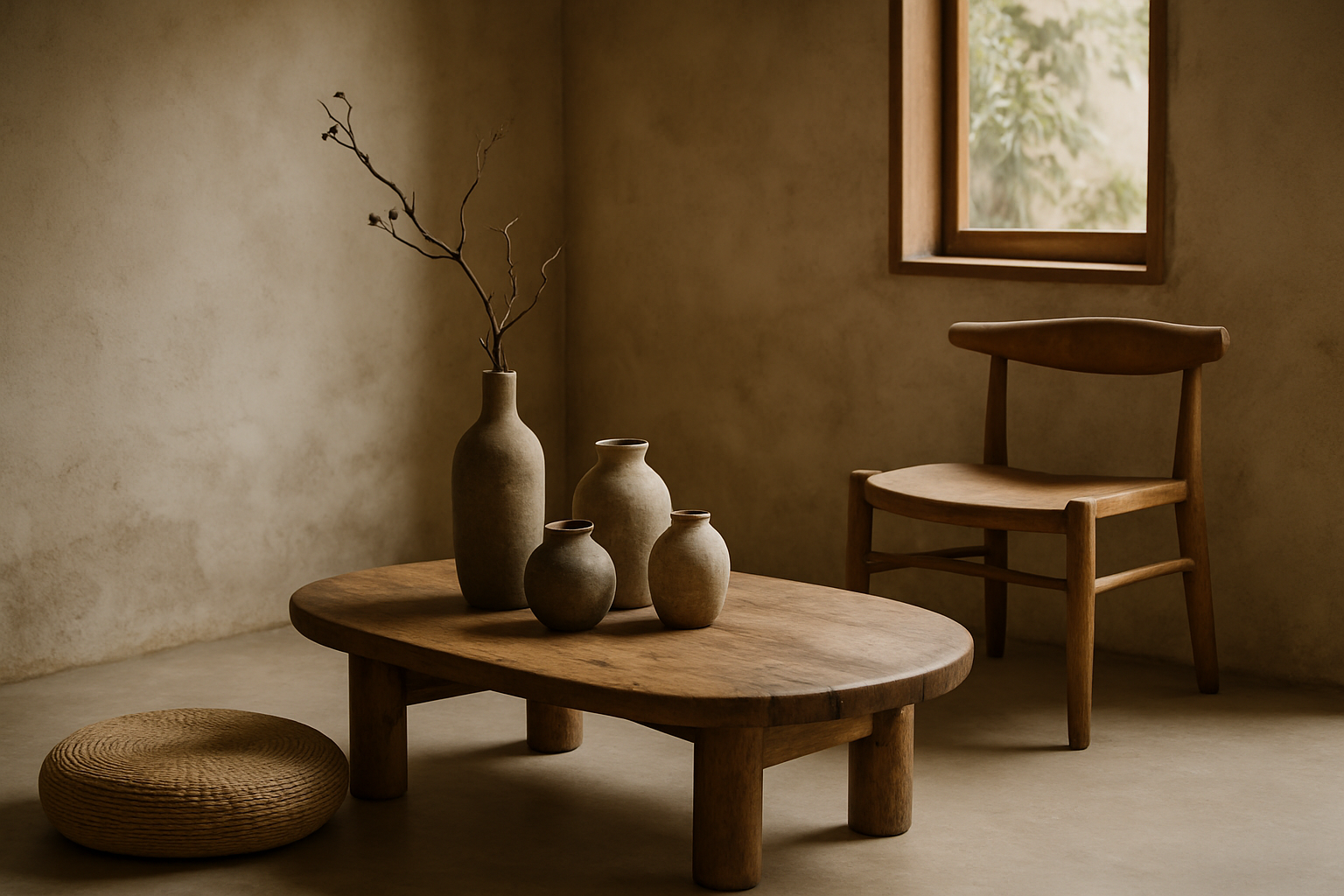Embracing Wabi-Sabi: The Art of Imperfect Beauty in Home Design
In a world obsessed with perfection, a revolutionary design philosophy is quietly reshaping how we view our living spaces. Wabi-sabi, an ancient Japanese concept, celebrates the beauty of imperfection and transience. This article delves into the intriguing world of wabi-sabi home design, exploring how embracing flaws and natural aging can create spaces of unparalleled serenity and authenticity.

The Roots of Wabi-Sabi
Wabi-sabi originates from Japanese aesthetics, deeply rooted in Zen Buddhism. The term combines two concepts: wabi, which refers to the beauty of simplicity and humble imperfection, and sabi, which embraces the passage of time and wear. This philosophy emerged in 15th-century Japan as a reaction against the prevailing aesthetic of ornate, perfect, and costly objects.
In its earliest incarnations, wabi-sabi was closely tied to the Japanese tea ceremony. Tea masters began to favor simple, handmade cups over ornate imported ones, finding beauty in their irregularities. This shift marked the beginning of a broader cultural appreciation for the imperfect, incomplete, and impermanent.
Wabi-Sabi in Modern Home Design
Today, wabi-sabi has transcended its cultural origins to become a global design trend. In home interiors, it manifests as a celebration of natural materials, organic forms, and the marks of age. Unlike the stark minimalism often associated with Japanese design, wabi-sabi interiors are warm, lived-in, and deeply personal.
Key elements of wabi-sabi design include:
-
Natural materials: Wood, stone, clay, and textiles that age gracefully
-
Handcrafted items: Ceramics, textiles, and furniture that show the maker’s hand
-
Patina: Surfaces that reveal their history through wear and weathering
-
Asymmetry: Imperfect shapes and arrangements that feel organic and spontaneous
-
Simplicity: Uncluttered spaces that allow each object to breathe and be appreciated
The Psychology of Imperfection
Embracing wabi-sabi in our homes can have profound psychological benefits. In a culture that often equates worth with newness and perfection, wabi-sabi offers a refreshing alternative. It encourages us to find beauty in the flaws and to appreciate the stories our possessions tell.
Research in environmental psychology suggests that spaces designed with wabi-sabi principles can reduce stress and promote mindfulness. The emphasis on natural materials and textures can create a sensory-rich environment that grounds us in the present moment. Moreover, by celebrating imperfection, wabi-sabi interiors can help alleviate the pressure many feel to maintain a flawless home.
Implementing Wabi-Sabi in Your Space
Incorporating wabi-sabi into your home doesn’t require a complete overhaul. Small, thoughtful changes can significantly shift the feel of a space. Here are some ways to begin:
-
Embrace natural textures: Introduce raw linen, unfinished wood, and rough stonework.
-
Display handmade items: Showcase ceramics, textiles, or furniture crafted by artisans.
-
Allow for weathering: Let metal patina naturally, wood develop a silver sheen, and leather soften with use.
-
Create vignettes with found objects: Arrange collections of stones, branches, or other natural elements.
-
Opt for earthy, muted colors: Choose a palette inspired by nature—soft greys, warm browns, and mossy greens.
Wabi-Sabi and Sustainability
One of the most compelling aspects of wabi-sabi design is its inherent sustainability. By valuing objects that age well and appreciating the patina of use, we naturally move away from a throwaway culture. This philosophy encourages us to buy fewer, higher-quality items that will last and become more beautiful over time.
Moreover, wabi-sabi aligns with the growing trend of upcycling and repurposing. An old, scratched table isn’t seen as trash, but as an object with character and history. This shift in perspective can lead to less waste and a more thoughtful approach to consumption.
The Future of Wabi-Sabi in Home Design
As we look to the future, wabi-sabi seems poised to play an increasingly important role in home design. In a world grappling with environmental concerns and the effects of consumerism, this philosophy offers a more sustainable and mindful approach to creating living spaces.
Designers predict that we’ll see more integration of wabi-sabi principles in mainstream design. This might manifest as an increased demand for artisanal products, a revival of traditional crafts, and a growing appreciation for materials that age beautifully, like copper, brass, and certain types of wood.
Balancing Wabi-Sabi with Modern Life
While the principles of wabi-sabi are timeless, integrating them into contemporary homes requires thoughtful consideration. The challenge lies in balancing the appreciation for imperfection with the need for functionality and cleanliness in modern living.
One approach is to create designated wabi-sabi spaces within the home—perhaps a reading nook or a dining area where handcrafted items and natural materials take center stage. In other areas, wabi-sabi elements can be incorporated more subtly, through texture, color, or the occasional imperfect object.
Finding Beauty in the Imperfect
Wabi-sabi offers more than just an aesthetic choice; it presents a different way of seeing and interacting with our environment. By embracing imperfection in our homes, we open ourselves to a deeper appreciation of the beauty that surrounds us every day.
As we move forward in an increasingly digital and perfection-driven world, the principles of wabi-sabi remind us to slow down, appreciate the present moment, and find joy in the simple and imperfect. In doing so, we may just discover that our homes become not only more beautiful but also more authentic reflections of ourselves and our lives.





